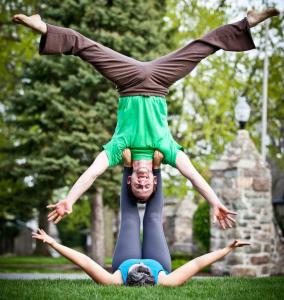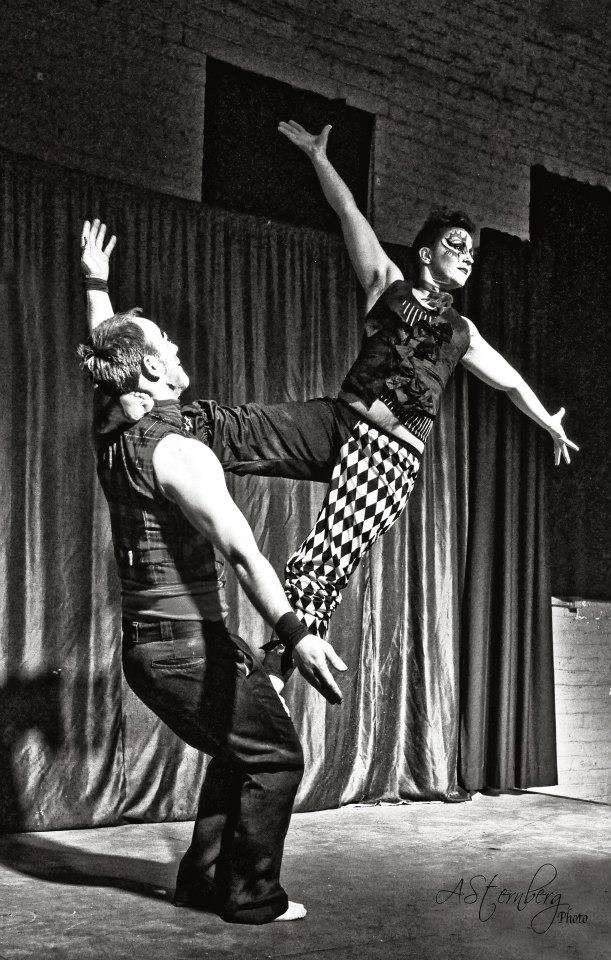At EVO ROCK + FITNESS INDY, we like to get many different perspectives and philosophies about climbing as well as all of the small nuances that go along with it. Today we focus on the brushing of holds. We asked one of our resident boulderers on staff to enlighten us on the physical importance of brushing holds and more over, the mental benefits.
MICHAEL DOTY

As days or maybe even weeks of accumulated chalk rose to a thick cloud, freed from its resting place in the microscopic valleys that make up the texture on a certain orange pinch I was brushing, I asked the setters, “Why don’t people in Indiana brush holds?” Neal replied, “Maybe they don’t know any better.” Maybe he’s right; brushing holds is seen a lot more in bouldering than it is in sport climbing and lets face it, Indiana isn’t known for boulders. So what if that’s the reason: no boulders equals no brushing? Some folks may go as far as to label me a fanatic when it comes to brushing holds (especially the ones that saw me literally skip with joy with the arrival of a new brush) so it was suggested that I write a little bit about why I feel so passionate about brushing. Hopefully, I’ll also help spread some love for and pique interest about bouldering because, if I’m being perfectly honest, the attendance at the bouldering wall makes me sad.
Since I’m a boulderer in a sea of sport climbers, it may help to know a little about my climbing background to help bridge the cultural gap. I started out at Climb Time Towers in the summer of 2008. While I kept my sessions fairly balanced between sport and bouldering, I would always warm up bouldering and usually gravitated toward this small 45 degree wall that always had hard problems on it. I loved the challenge of putting the mental and physical pieces together to be able to solve the problems and bouldering it felt something like a moving meditation (more about that later).
A little less than 2 years later, I moved to San Francisco for grad school and was lucky to have 2 gyms and 3 crags within walking distance.
Two days into being in SF, I got a membership a gym that was a 20-minute walk from my school and was blown away by the bouldering area. Going from large, flat surfaces to caves, arches, waves…climbing surfaces of all angles…was a shock and nothing short of an inspiration. In addition, I was drawn to the bouldering community; it was incredibly accepting and collaborative; it certainly has more of a family feel than anything I can imagine with people pairing up on ropes. When the bouldering-only gym opened up, I was ecstatic. I spent 2 years bouldering exclusively 4-5 days a week and only roped in once a week thereafter. All the while, I was studying psychology, training to be an Expressive Arts therapist, and doing research on using climbing for improving mental health.
For my first paper in my first semester, my research let me to a book, Beyond boredom and anxiety: Experiencing flow in work and play, in which psychologist Mihaly Csikszentmihalyi theorizes that people are the most happy when they were in a state of “flow,” a state of complete concentration on the task at hand, similar to what has been described as being in the zone where anxiety no longer exists (1975). He describes being in a state of flow when “you’re so involved in what you’re doing, you aren’t thinking about yourself as separate from the immediate activity. You’re no longer a participant observer, only a participant. You’re moving in harmony with something else you’re part of (Csikszentmihalyi, 1975, 86). Csikszentmihalyi hypothesizes that people are constantly alternating between a state of anxiety and pressure during times of work and obligation and one of passive boredom during leisure time. By reconstructing leisure time and choosing active experiences with clear goals rather than passive ones, a person can achieve a state of flow. Flow is seen to be on the same plane as anxiety, both involving a high level of challenge; anxiety exists when skills to cope with the challenge are low and flow exists with the skills to cope are high.
Csikszentmihalyi (1975) often uses examples of outdoor activities such as mountaineering and rock climbing to describe situations that are optimal for achieving a state of flow. He writes: The justification of climbing is climbing, like the justification of poetry is writing; you don’t conquer anything except things in yourself . . . The act of poetry justifies writing. Climbing is the same, recognizing that you are a flow. The purpose of the flow is to keep on flowing, not looking for a peak or utopia but staying in the flow. It is not a movement up but a continuous flowing: you move up only to keep the flow going. There is no possible reason for climbing except the climbing itself; it is a self-communication. (Csikszentmihalyi 1975, 48)
This state of flow is where I go when I boulder. It is where, for the moment, nothing else exists but me and the climb. I have no care in the world except for moving with the rock (or plastic). As I climbed more and more, I began to realize that it had turned into something of a meditative practice, similar to what I experienced when I took/assisted in T’ai Chi classes. Like participants in many sports, I established something of a pre-climb ritual that helped mentally prepare for the challenge ahead. I would go up to a boulder, study the holds, their angles and surfaces, and visualize my beta before stepping back to take some deep breaths. I’d chalk up, go to the start holds and run through my beta again before grabbing the start and taking off, continuing to breath deeply as I move through the sequence. And the comes the fall, one tiny slip of the hand or foot and I’m back on the mat.
You may be wondering where brushing comes in to all of this. When I fall, it’s common for me to bounce to my feet almost immediately, grab my brush, and run to clean the holds. Obviously, cleaning the hold is the general purpose in brushing holds. Textures on the holds gets filled up with chalk, sweat, and skin cells (don’t act like it doesn’t happen) and all that gunk reduces our chances of achieving optimum friction. The idea is that the cleaner the hold is, the better the friction and the better the friction, the more likely you’ll stick that big move to the gnarly pinch or greasy sloper. But cleanliness and friction aren’t the only reasons to brush your holds.
Think about what it’s like to scrub something clean. Initially, it doesn’t seem like it is very involved, but it actually takes a decent amount of brainpower to process the visual and kinesthetic feedback and use both gross and fine motor skills. All of this brainpower is subconsciously analyzing the details about the holds and if we take a conscious approach to our brushing, we are exposed to a wealth of knowledge about the holds: sizes, angles, textures, and sweet spots. This information can be used to help send our projects. By gaining intimate knowledge of the holds, the climber is able to begin to tweak their beta in ways that increase the likelihood of successful ascension. That foothold that always spits you off? Good chance it’s directional or has a small amount of usable surface. Brush it, study it, find out its secrets. How about the hold that you can never quite stick? Could be a friction issue or there might be a subtle sweet spot. You can throw yourself at it all day and wonder or you can brush it and find out almost immediately.
Brushing increases friction and provides us with valuable information, but it has more to offer. The ideas of flow, meditation, and mindfulness extend into brushing. When we brush our holds, we extend the time in which we exist in the moment with our climb. In the moment, it’s just the climber and the holds; the stressors of our daily lives fade away, our anxieties melt, and the things that can get us down burn off like morning fog. Whether you call it mindfulness, flow, or meditation, those moments are when we can exist free of what burdens us. When we let go of all of that stuff we are whole, we are pure.
So that’s why I’m a brushing zealot. Brushing is meditative and informative. It’s practical and it will make you a better climber. Who doesn’t want to be a better climber? Give brushing a try for a while and see if it works for you. I know for a lot of you, that means untying that beautifully dressed figure-8 follow-through and heading over to the mat (although you can brush holds on your routes if you want), but like I said at the beginning, bouldering mat attendance is lower than what I’d like to see.
If you don’t own a brush, we have them for sale at the front desk (please support your local climbing gym). Also, be on the lookout for some big brushes that will be hanging out by the bouldering wall soon. If you aren’t an EVO member, it’s a good time to start bouldering – we’re running a summer sale on bouldering day passes: $12 for adults/students and $10 for children.
See you on the bouldering mat!

Thank you to Michael for all the the insights into the world of brushing boulders. Everyone can benefit from putting some bouldering into their climbing routine. Feel free to drop by the front desk and ask Michael any questions you may have!
























